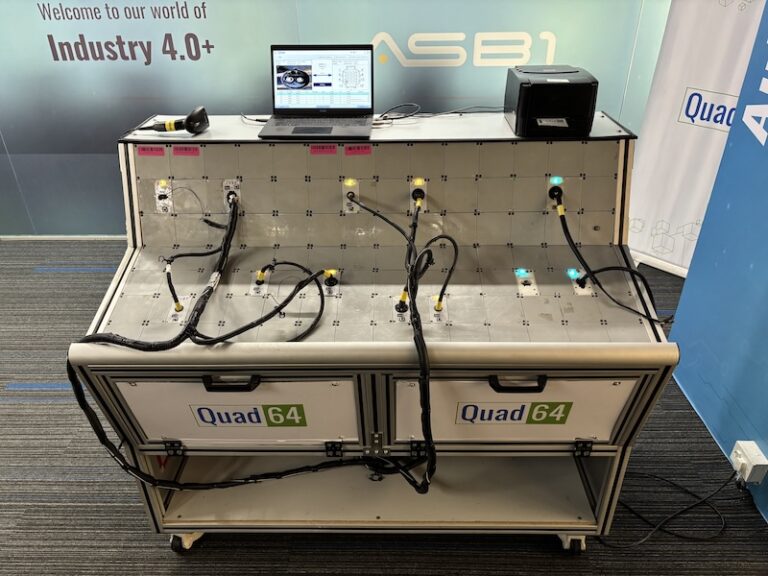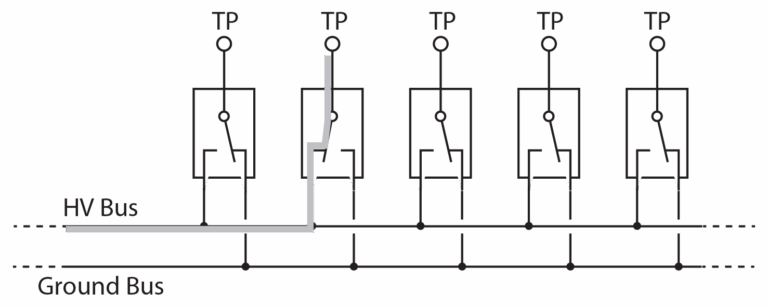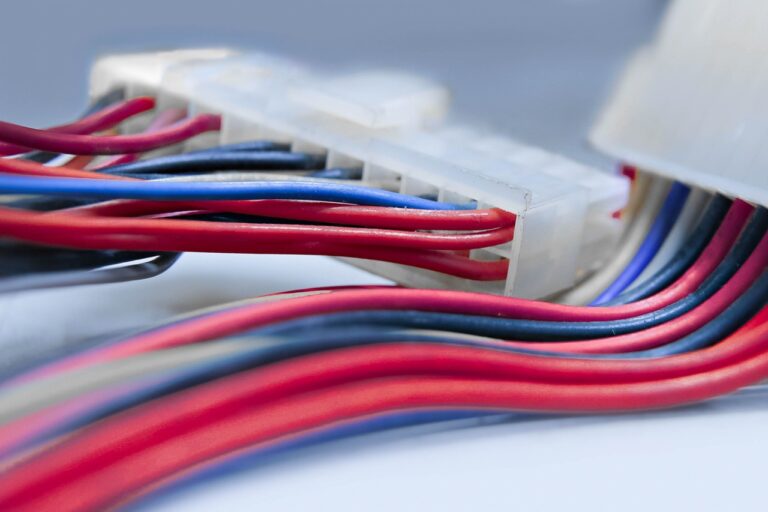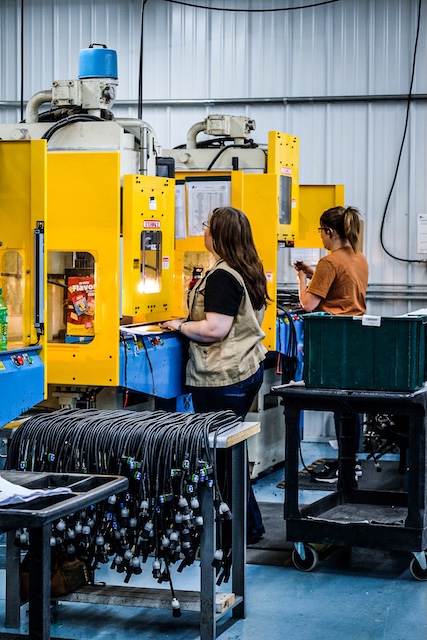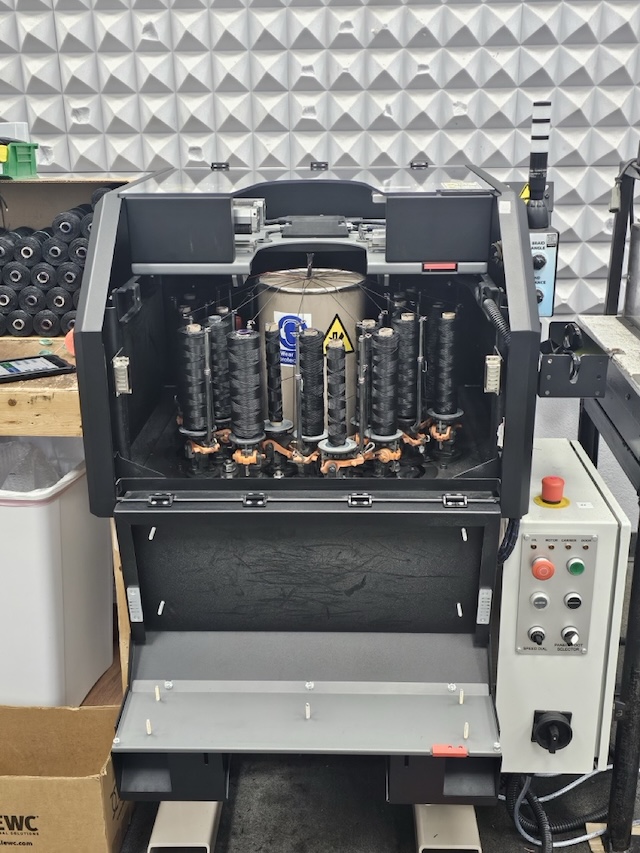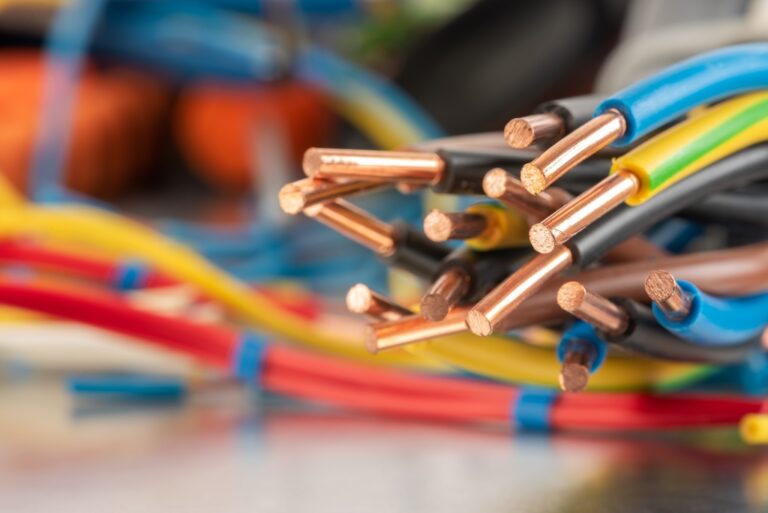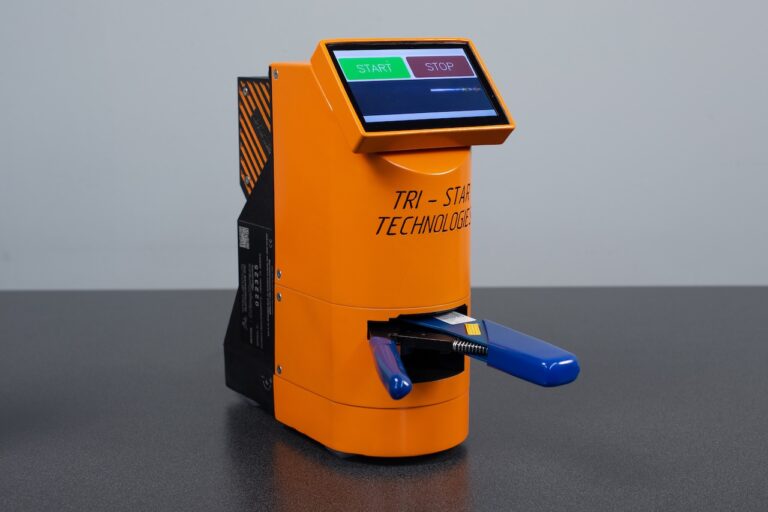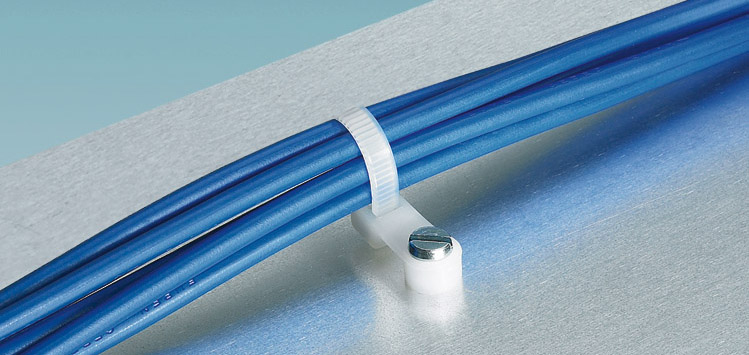Proper Selection & Use of Wire Ties
By Maria Haynes, Lead Product Marketing Specialist, Phoenix Contact USA
All tangled up? Do you need a way of cleaning up your cabinet or securing cables for transport? Wire ties keep your cabinet organized, but there’s more to consider than you might think! There are so many decisions to make when choosing a wire tie, such as bundle diameter, tensile strength, material composition, color, environmental conditions and any special requirements.
Bundle diameter
First, you need to determine what is being pulled together and then measure the bundle diameter. What is meant by “bundle diameter”? A bundle of things is several collected items brought together. Diameter is the measurement of the thickness of that group of items, measured by a straight line passing through the center of the circle. The length of that straight line is the diameter.
Once you know the bundle diameter, you can determine the length requirement of a wire tie. For our purposes, we will assume our bundle consists of a group of wires or a large single cable. You might need to run these from point A to point B rather than have them dangling freely with the potential to get snagged and disconnected. Wire ties can hold the wires together, attaching them on their path to prevent movement or accidental disconnection.
Tensile strength
Second, we need to determine the required tensile strength of the wire tie. Tensile strength is the resistance of the material (in our case the wire tie) to prolonged stress. It is measured by the minimum amount of resistance needed to cause the material to break.
Tensile strength determines the strength of the wire tie in a steady state. DIN EN 62275: 2010 and SAE AS 23190 form the basis of the test conditions and evaluations of the results of the tensile strength. The wire tie spans a defined field (Ø 38 ± 0.2 mm) and is pulled open at a speed of 25 meters per minute. The force determined when the wire tie tears or the plastic becomes deformed (flows) must be above the values defined in the standard. Tensile strength is measured in Newtons. A best practice is to choose loop tensile strength values that are higher than the limit values defined by standards.
What tensile strength is needed for the application? A simple calculation can be used to determine the required minimum holding force for the individual application. Mass [kg] = preload [kg] + bearing load [kg]. Minimum holding force [N] = mass [kg] x gravitational acceleration [m/s²]. The preload is the tensile force when tightening the wire ties.
Choosing the right material
Once the length and tensile strength are determined, the next step is to choose the appropriate material of the wire tie: steel or plastic. Phoenix Contact’s plastic wire ties are available in polyamide plastic or V2A or V4A stainless steel. Deciding which material to use will depend on the application and the local environment. Is the cabinet going to be inside, protected from the elements? Is it going to be on a boat or ship where the sunand saltwaterwill affect it? Or is it meant to secure the product for transportation to its destination?
Plastic
Phoenix Contact’s plastic wire ties are manufactured with polyamide plastic due to its excellent electrical, mechanical, chemical and thermal properties, even at high temperatures. They are free from silicone and halogen, ideal for operating temperatures from -58°F to 257°F.
In a typical climate, polyamide can breathe and maintain stability, tensile strength, tenacity, and resistance to abrasion and sliding. The flexibility and minimum holding force are influenced by the water content of the wire tie and therefore should be stored in polyethylene bags, protected from direct sunlight and heat sources until they are used.
Common varieties of plastic wire ties include:
- Standard
- High-temperature
- UV-resistant
- Removable
- Blue magnetically identifiable
- Screw or rivet-mount
- Body-mountable
Ideally, any plastic wire ties should be halogen-free. The term halogen-free relates primarily to the elements chlorine and bromine in flame-protection agents. In order to be classified as halogen-free, the material must consist of less than 900 parts per million of these elements and have less than 1,500 ppm of total halogens. The term “total halogens” refers to chlorine, fluorine, bromine, iodine and astatine elements, commonly used in the production of plastics and Teflon. Halogen-free plastics were established due to the dangers of gases released when these elements catch fire or are heated to high temperatures. Halogen-free is preferred, and in some cases required, in areas with a lot of foot traffic, such as hospitals, airports, buses and train stations.
Standard wire ties meet the basic requirements. As an example, Phoenix Contact’s standard wire ties are available in white (commonly referred to as transparent) or black and range from 3.85” to 11.89” long. The thicknesses of the tie range from 0.1” to 0.5” relative to the tensile strength of 80N to 1080N. Color choice is a matter of user preference.
High-temperature wire ties contain copper dioxide additives that enable them to withstand higher levels of heat, up to 257°F. These versions are also available in white or black, ranging from 3.85” to 14.4” in length, 0.1” to 0.3” in width, and 80N to 540N in tensile strength.
The UV-resistant wire ties are available in the same length, width and tensile strength as the high-temperate wire ties, but they differ in their UV-B protection. Those without any special UV protection can withstand around 150 hours of high-dose UV-B radiation without any damage. Phoenix Contact’s UV wire ties have a much higher level of resistance because they are fixed with UV protection, providing resistance up to 10 years.
Removable wire ties are suitable for applications such as transporting, which requires quick and easy removal. No tools are required to unlock them, and they can be reused. Phoenix Contact carries six types of removable wire ties, three in black and three in white. All are .3” in width and are between 8” and 13.8” long.
In the food and beverage industry, blue is the preferred color for non-edible components. The number of blue foods is minimal, so it is the desired color for components in and around production. If a wire tie getslost on the production line, the blue color makes it easy to spot. For additional security, Phoenix Contact’s blue wire ties are magnetized for easy locating and removal with a magnet. Some factories have spectrograms for detecting such color objects on the production lines.
The blue magnetized wire ties are also used in the pharmaceutical and chemical industries. There are six sizes available, from 3.85” to 14.4” long and 0.1” to 0.3” wide.
There may be times when the application not only calls for securing the wires together, but to also secure them to a panel or surface. To accomplish this without adhesives, Phoenix Contact offers two mounting options built into the wire tie. One option is to use a screw or rivet in the specially designed head of the wire tie to fix it to the panel. The screw- or rivet-mounting wire tie is available in white and ranges from 5.9” to 15” in length. A second mounting wire tie option does not require screws or rivets, rather it has the rivet built into the head to secure it into a predrilled hole on the panel. Two sizes are available of the built-in rivet-mounting wire ties, 5.9” and 7.9” in length.
Stainless steel
Stainless steel is the other common material used for wire ties. Phoenix Contact offers two different grades of stainless steel, V2A and V4A. Both are resistant to vibration, weather and UV, and they are anti-magnetic and fire-proof. However, the V4A is also resistant to harsh chemicals such as acid and saltwater. The V2A stainless steel wire ties are suitable for the chemical and processing industries, whereas the V4A is required for onshore or offshore industries such as oil and gas.
Accessories
Finally, you will need to decide what accessories will complement your wire ties. Phoenix Contact carries several different options for wire tie bases. While self-adhesive and/or screw-mount bases work for many applications, high-temperature locations may require screw-mount only or bases with built-in rivets. If all you need is to temporarily tie some wires together, a cable driller might be able to do the job for quick and tool-freegrouping of wires and cables.
Conclusion
In summary, choosing a wire tie can require a little thought. While wire ties seem like a simple component, choosing the right one for an industrial location requires careful consideration of many different factors. If you would like specific information on products from Phoenix Contact, visit www.phoenixcontact.com/wire

























